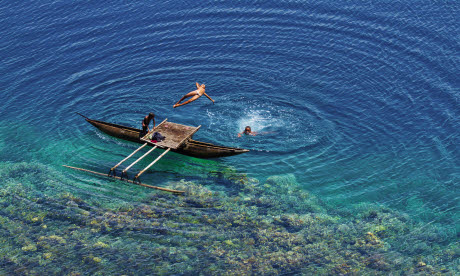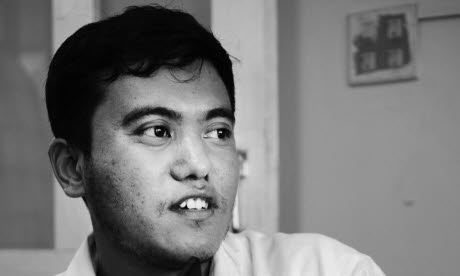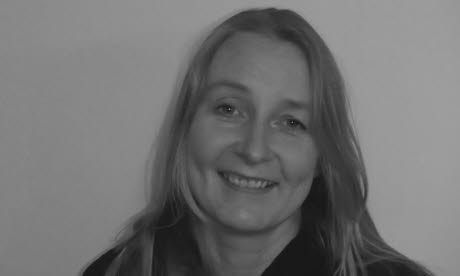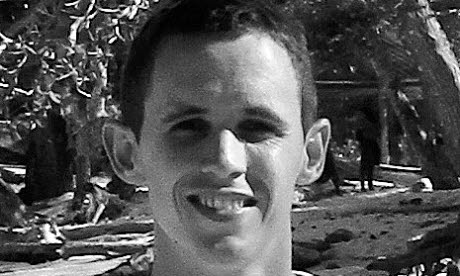
We meet the winners and runners-up from Wanderlust's 2012 competition and quiz them on their prize trip to Papua New Guinea
 Kyaw Kyaw Winn (KKW)
Kyaw Kyaw Winn (KKW)
People category winner and Landscape category runner-up
 Deborah Dunderdale (DD)
Deborah Dunderdale (DD)
Wildlife category winner
 Stephen Walford (SW)
Stephen Walford (SW)
Icon category runner-up
1. What was it like knowing you’d beaten off stiff competition for Wanderlust's Photo of the Year competition? How did you feel?
KKW: I live in Myanmar so it’s very difficult for me to participate in European photo competitions. Wanderlust's Travel Photo of the Year competition was a great opportunity for me because I could participate without paying expensive entry fees. When I found out I had won two prizes in the competition, I couldn’t believe it. I thought I was dreaming.
DD: I was shocked when I saw I had won the wildlife category. I originally thought there was a mistake when I saw my picture as the winning shot. I though they were rotating through all the finalists but then I realised it had won. I still can't really believe it!
SW: I was up against some superb photos and was very surprised to hear I had been shortlisted. I had hoped my image might catch the judge’s eye due to the Olympic theme and the relevance for the year. Having made the top eight in such a competitive competition is amazing.
2. What were you looking forward to most about the trip?
DD: I was looking forward to seeing a bird of paradise most which did prove difficult. I would definitely go again to try and get some fantastic bird of paradise shots.
SW: Being able to go to a country which is still relatively untouched by tourism and to see the traditional cultures still going strong – it sounded like a photographer's heaven.
3. How did you prepare for your prize trip to Papua New Guinea?
KKW: I didn't do anything special, because I have had many experiences on many different photo trips.
DD: I didn't know how to prepare for it. I tried to research it on the internet but information was limited. I spent ages debating what lenses to take but in the end I found a forum where someone had been to Papua New Guinea and said that the birds of paradise lived high in the tree tops and he had been unable to take any photos of them. So I decided not to take my big lens and focus on photographing people, which is something I haven't done before. I then spent a long time researching travel photos and photos of tribesmen and women so I had an idea of the images I would like to try and get. I knew for me it would be a lot of trial and error.
SW: I already had some knowledge of the country through work – the department I work for in UCL had a research project based in PNG, studying a disease called ‘Kuru’. This was a neurodegenerative disease caused by cannibalism. I also watched an excellent documentary called ‘First Contact’ which documented the expedition by the Leahy brothers into the Waghi Valley in the 1940s and the discovery of a million indigenous people. As our trip included staying in the Waghi Valley (Mount Hagen) it was really interesting to see the history of the area and how much has changed in the years since. The PNG Tourism travel website also had some useful information on the various areas of the country. Other than that, I made sure I had enough memory cards for my camera and that all my camera gear was working!
4. What were your first impressions when you arrived in Papua New Guinea? Did this match up with that you expected? Had you been there before?
KKW: When I arrived in Papua New Guinea, I was amazed by everything. Before I went on the trip, I only knew the bad news about Papua New Guinea. When I arrived, everything was different to what I expected.
DD: I didn't know what to expect. I certainly expected Mount Hagen to be warmer than it was. It was cool and chilly at the hotel. When we were at Tufi it was glorious sunshine – quite a contrast. But, that is how I found Papua New Guinea. There was thick almost-rainforest with a beautiful pristine beach next to it. The people were so friendly and helpful, I didn't expect that. Although I had read that they were friendly, it definitely surprised me.
SW: Having not been to PNG before, or any of the Pacific islands, I didn’t really know what to expect other than the traditional cultures. My first real impression when arriving in Mount Hagen was the number of people standing around everywhere. It was quite strange but common as employment levels are quite low and most people are involved in agriculture. Getting used to them staring at you was strange at first. However, as soon as you smiled at them and waved, their faces lit up and you always got a big grin and a wave back. In terms of the culture and villages, it was easily the most interesting place I have visited. The locals really looked after us and were all genuinely nice people.
5. How does Papua New Guinea compare to other places that you’ve photographed? What was different or the same?
KKW: I'm interested in shooting photos of real people and tribes. In Papua New Guinea, I can see this but I can also see and experience beautiful seascapes.
DD: Papua New Guinea does not compare to anywhere I have ever been before. It is amazing to go to a country where both children and adults wave when they see you and are the most friendly and helpful people I have ever met. It was certainly very different for me photographing people as I usually stick to wildlife. So, for me, I was out of my comfort zone. I struggle to photograph people as I feel it is intrusive and doesn't capture the true nature of people. But the people of Papua New Guinea were really comfortable having their photo taken and were absolutely delighted when you showed them their picture. That made me feel more relaxed taking their photo.
SW: PNG was completely different. All the locals wanted their photo taken and showing them the result on the camera display seemed to provide endless entertainment! I have found on trips to other parts of the world that people would always ask for money when taking their photo, but this does not happen in PNG (however, at each village you visit you are expected to make a small donation to the village, whether taking photos or not). The landscape was also stunning – being so undeveloped it felt like you had stepped back in time, especially on the coast. There were no roads, the locals generally used traditional wooden canoes to get around, and this created fantastic photography opportunities.
6. If you had to describe Papua New Guinea in just one word what would it be and why?
DD: I can't put it in one word but will have to use two. It is an 'untamed paradise'. Why? Because the landscape is still wild and rugged in places and there are no roads and you are in the only motorised boat on the sea. Beaches have beautiful clean sand, no rubbish on the shore and look like they are melting into a deep tropical rainforest. When there is a road there are so few cars on it. There are species of animals still being discovered in the country. I am so pleased I have been. I was out of my comfort zone but it was amazing to see an unspoilt country.
SW: It would have to be ‘unique’. It is unlike anywhere else I have ever visited. The people have such a distinct look and everyone was photogenic. The landscape was also unlike anywhere else I have been – so pristine with little development.
7. What was the highlight of the trip for you?
KKW: The amazing and wonderful culture, beautiful seascapes, local people and the many different tribes.
DD: The highlight of the trip for me was going down a fjord in the Tufi region on a raft through the mangroves to a beautiful area full of Sago plants and butterflies (some of which are 30cm across). This was our raft guide, Jeff's, land and we were shown Sago making and fire lighting. Jeff told us how he had given up living in Port Moresby for life here. He comes down to this area every day, lives off the land, and provides for his family. It is a hard life but rich in rewards as it is a beautiful place. There are no roads anywhere. It is so peaceful.
SW: Nem Village in the Highlands was definitely one highlight. We were greeted by the village elder, Andrew Rumunts, in his traditional dress and the village demonstrated some aspects about their traditional life – courting, singing, and cooking. Andrew was such a character – he loved posing for us and had a great sense of humour. The village then offered us some sweet potatoes which had just been cooked in their earth oven/cooking pit – they were delicious! The other highlight was in the village of Bawame, near Tufi on the coast. The villagers had set up a picnic area for our lunch on the cliff top overlooking the bay and coral reef. The local kids decided to show off on one of their canoes, paddling out over the reef and diving into the sea. Again a dream location for a photographer and somewhere that I will never forget.
8. What are your top tips for travel photography?
KKW: These are my tips for travel photography: a) Get good information about the trip and destination before you go; b) You need to know what special things there are. I mean the scene that can be see only in the trip; c) Make sure you're carrying the right camera and equipment for the trip.
DD: I don't really have any top tips other than have your camera ready as you never know what you might see. Taking a video instead of a photograph can definitely give you a better reminder of your time there. Remember your memory cards!
SW: Just keep snapping. Of the huge number of amazing travel photos I see, a lot of them are taken spontaneously. Being able to capture that unique moment can come and go so quickly so it's best to keep clicking away and have lots of memory cards!
9. What was your favorite image that you captured in Papua New Guinea and what made it special?
KKW: My favorite images that I captured in Papua New Guinea are the portraits of local tribe people. I am very interested in their lifestyle, culture, clothes, make-up and emotions.
DD: My favourite image of the trip is an image of a tribesman from Tokua Village. He is an elderly gentleman with a face full of character. It is a simple image with him set against a dark background. For me it just captures his spirit. As we all stood there taking photos with our modern technology he just stood there with a face that had seen so many changes in his country during his lifetime.
SW: I have two favourites – a portrait of a villager in Nem Village, the young man was wearing traditional dress and face paint. He seemed very interested in the photos we were taking. At one point we turned around and he had produced a mobile phone from his traditional dress and was taking photos of us! Technology is creeping into the traditional way of life. The other favourite is of the boys jumping off their canoe into the sea at Bawame Village (above). The sea in the area was beautiful, so clear and the coral reef was pristine. I managed to go snorkelling in the same bay as the photo and the fish and reef were the best I have seen, absolutely teaming with life!
10. Did you learn anything new about photography while on the trip? What was it?
KKW: I wanted to try underwater photography on this trip but I didn’t get the chance in the short time we were there. But I got new ideas and knowledge from other photographers in our group.
DD: I learnt that I could definitely benefit from learning more about my camera and the things that can be achieved with it. That is thanks to Kyaw Kyaw who achieves amazing results from his camera settings. He knows his camera inside and out. I have buttons that I never know what they do!
SW: I hadn’t previously had much experience with portrait and people photography, I have usually focused on landscapes and scenery. It was the perfect place to learn about photographing people and it certainly helped that everyone wanted their photograph taken. Being with other photographers allowed me to get ideas and learn how best to approach people photography. Kyaw Kyaw (one of the other winners) was excellent at moving people around to pose for photos!
11. Any words of wisdom for those thinking of entering Wanderlust’s Photo of the Year in future?
DD: My only words of wisdom for those entering the competition is to be creative. If you have the time with a subject, try different things to capture the mood or essence of the moment. That's how I won it with my flamingo picture.
SW: This was the first time I had entered the competition and I thought carefully about the photos I was entering. With Travel Icons I wanted to enter an image which showed an unusual view of a recognisable place – Tower Bridge has been photographed millions of times, but capturing it at that one moment created a photo of an icon which you don’t often see. Try to think of photos which will stand out to the judges. When you think that there are 8,000 entries, having an image that stands out is vital!
12. You won the people category and were runner in the landscape category – how did you find photographing the people and landscapes of Papua New Guinea?
KKW: I really enjoyed photographing the people of Papua New Guinea. They were great photo subjects. All of local people from the small villages to cities are very friendly and were happy for me to take their photo. I think the landscapes of Papua New Guinea are similar to my country. So it can’t amaze to me. But the seascapes of this country are great to shoot photos. I captured many clean, beautiful and amazing seascape photos on this trip. I am sure also you could take wonderful underwater photos too.
12. You won the Wildlife category – what was it like photographing the wildlife in Papua New Guinea? Were there any specific challenges that you faced?
DD: Birds of paradise and tree kangaroos were what I really wanted to see. They are both challenging as they live in dense forests. Tree kangaroos are nocturnal. I didn't manage to see one of those. Birds of paradise live high in the tree tops. While I was at Mount Hagen I got up early and went on a trek with a local guide. A guide is essential. He knew where specific birds displayed and at what times and could identify the different bird calls. It was misty on the top of the mountain and, with the dark forest, photography conditions were not ideal. I managed to get a photo of a Brown Sicklebill in flight. I also saw a King of Saxony and a splendid Astrapia. They were tantalisingly close but always too far! In order to get the photographs it would have entailed waiting, ideally in a hide, and getting to the location while it was still dark!
12. You were runner up in the Icon category – how did you find the challenge of photographing icons in Papua New Guinea?
SW: The thing people generally think of when you say PNG is the tribes and people, which is the real selling point. In this sense the people are the icon of the country and it was certainly an experience photographing them and their traditions. Photography wise I did feel quite of my comfort zone to start with, but soon adapted and I am very happy with the photos I took.